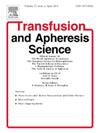Lipoprotein apheresis: Current overview and future outlook in clinical practice
IF 1.2
4区 医学
Q4 HEMATOLOGY
引用次数: 0
Abstract
Lipoprotein apheresis (LA) remains a critical therapeutic approach for patients with severe lipid disorders, particularly those who fail to achieve target LDL-C or lipoprotein(a) [Lp(a)] levels despite advances in pharmacological therapies. While new therapies, such as PCSK9 inhibitors, antisense oligonucleotides, and siRNA-based treatments, have expanded the options for lipid management, LA continues to serve as an essential last resort for high-risk individuals. Patients with homozygous familial hypercholesterolemia (HoFH) or severe hypercholesterolemia (sHCH) often require LA to mitigate extreme cardiovascular risks, including premature myocardial infarction and aortic valve stenosis. Furthermore, LA is the only available therapy capable of effectively reducing elevated Lp(a) levels, a known independent risk factor for cardiovascular events. The recent introduction of anti-inflammatory treatments for atherosclerosis, such as low-dose colchicine, highlights the multifaceted nature of cardiovascular disease and underscores the importance of multimodal treatment strategies. LA, with its dual ability to remove LDL-C and Lp(a) particles as well as inflammation-inducing agents, may offer unique advantages in addressing these complex pathologies. In light of these developments, LA retains its relevance as a safe and effective intervention for individuals who do not respond adequately to other lipid-lowering therapies. By integrating LA into broader treatment frameworks, including acute-phase cardiovascular event management, its potential to improve long-term outcomes warrants further clinical investigation. To date, the pivotal role of LA in modern cardiovascular care must be reaffirmed, emphasizing its continued significance as a fundamental component of comprehensive lipid-lowering strategies for high-risk patient populations.
脂蛋白分离:临床应用的现状与展望
脂蛋白分离(LA)仍然是严重脂质疾病患者的关键治疗方法,特别是那些尽管药物治疗取得进展,但未能达到目标LDL-C或脂蛋白(a) [Lp(a)]水平的患者。虽然新的治疗方法,如PCSK9抑制剂、反义寡核苷酸和基于sirna的治疗,已经扩大了脂质管理的选择,但LA仍然是高风险个体必不可少的最后手段。纯合子家族性高胆固醇血症(HoFH)或严重高胆固醇血症(sHCH)患者通常需要LA来减轻极端心血管风险,包括过早心肌梗死和主动脉瓣狭窄。此外,LA是唯一能够有效降低Lp(a)水平升高的治疗方法,而Lp(a)是已知的心血管事件的独立危险因素。最近引入的抗炎治疗动脉粥样硬化,如低剂量秋水仙碱,突出了心血管疾病的多面性,强调了多模式治疗策略的重要性。LA具有去除LDL-C和Lp(a)颗粒以及炎症诱导剂的双重能力,可能为解决这些复杂的病理提供独特的优势。鉴于这些发展,对于那些对其他降脂疗法没有充分反应的个体,LA仍然是一种安全有效的干预措施。通过将LA纳入更广泛的治疗框架,包括急性期心血管事件管理,其改善长期预后的潜力值得进一步的临床研究。迄今为止,必须重申LA在现代心血管护理中的关键作用,强调其作为高风险患者群体综合降脂策略的基本组成部分的持续重要性。
本文章由计算机程序翻译,如有差异,请以英文原文为准。
求助全文
约1分钟内获得全文
求助全文
来源期刊
CiteScore
3.60
自引率
5.30%
发文量
181
审稿时长
42 days
期刊介绍:
Transfusion and Apheresis Science brings comprehensive and up-to-date information to physicians and health care professionals involved in the rapidly changing fields of transfusion medicine, hemostasis and apheresis. The journal presents original articles relating to scientific and clinical studies in the areas of immunohematology, transfusion practice, bleeding and thrombotic disorders and both therapeutic and donor apheresis including hematopoietic stem cells. Topics covered include the collection and processing of blood, compatibility testing and guidelines for the use of blood products, as well as screening for and transmission of blood-borne diseases. All areas of apheresis - therapeutic and collection - are also addressed. We would like to specifically encourage allied health professionals in this area to submit manuscripts that relate to improved patient and donor care, technical aspects and educational issues.
Transfusion and Apheresis Science features a "Theme" section which includes, in each issue, a group of papers designed to review a specific topic of current importance in transfusion and hemostasis for the discussion of topical issues specific to apheresis and focuses on the operators'' viewpoint. Another section is "What''s Happening" which provides informal reporting of activities in the field. In addition, brief case reports and Letters to the Editor, as well as reviews of meetings and events of general interest, and a listing of recent patents make the journal a complete source of information for practitioners of transfusion, hemostasis and apheresis science. Immediate dissemination of important information is ensured by the commitment of Transfusion and Apheresis Science to rapid publication of both symposia and submitted papers.

 求助内容:
求助内容: 应助结果提醒方式:
应助结果提醒方式:


